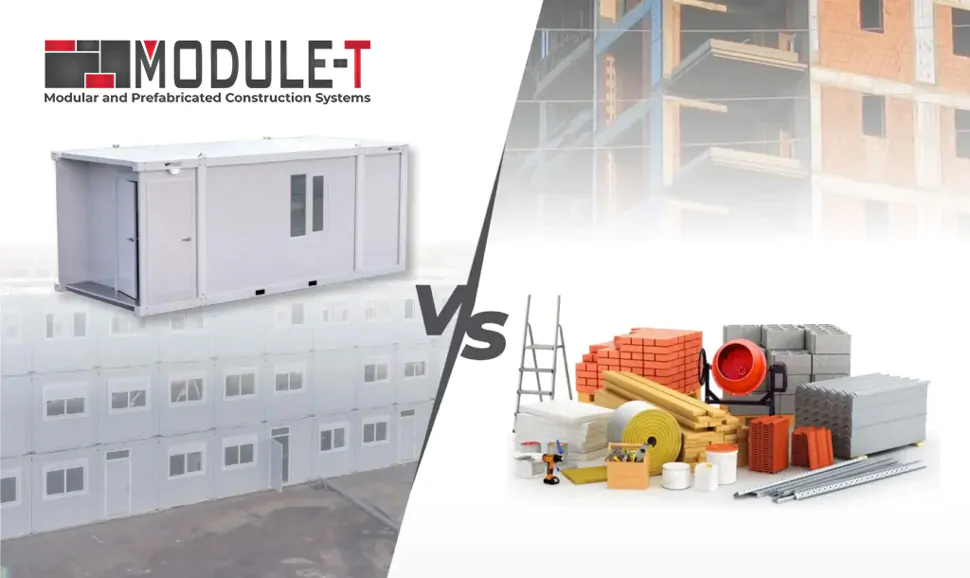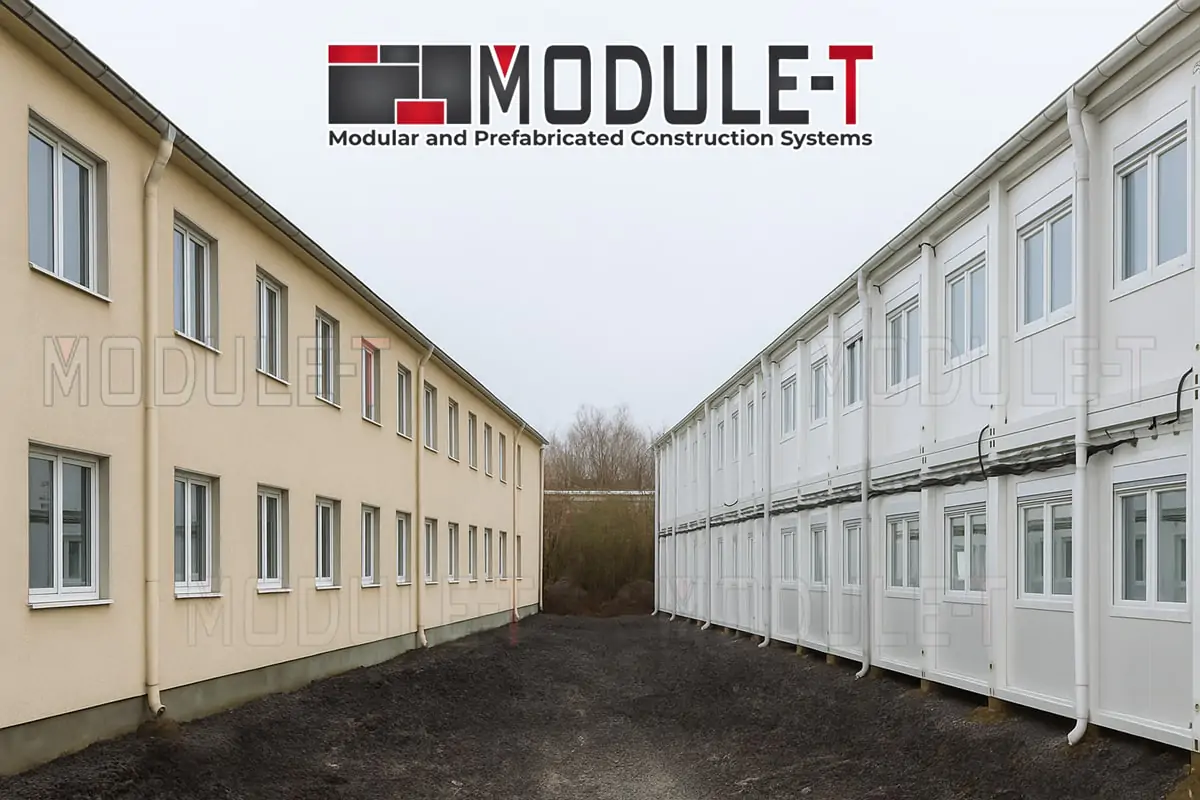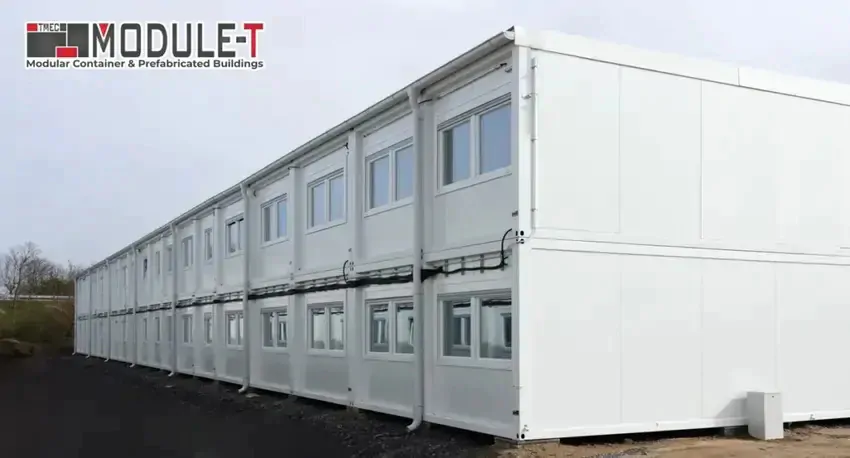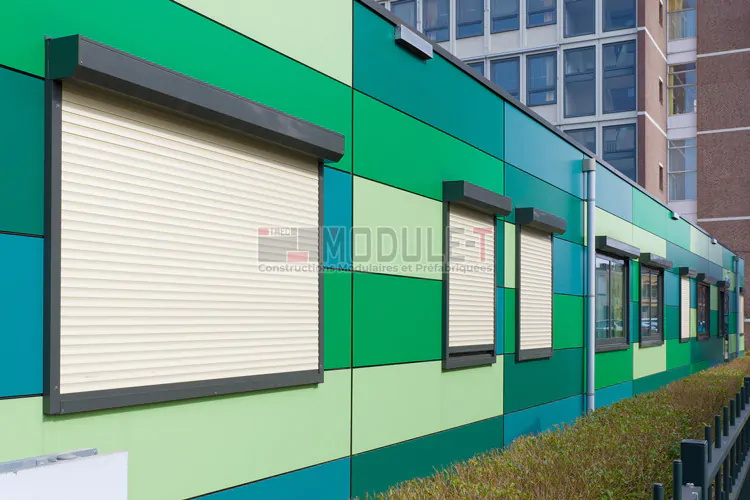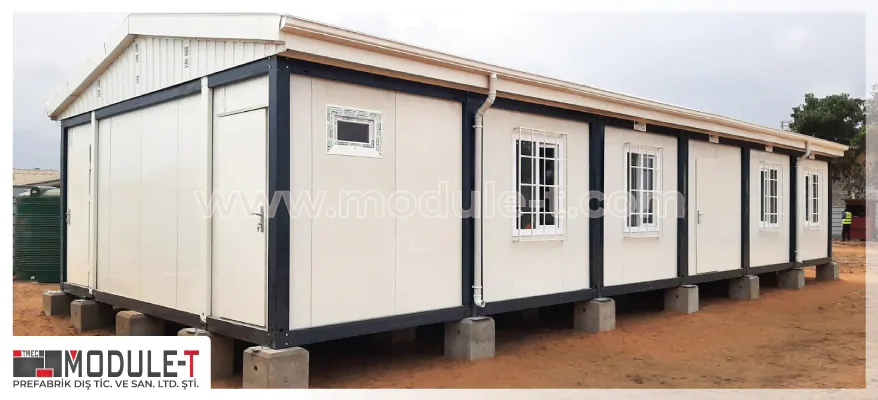Key Trends in Modular Construction
Growth of Sustainable Modular Design
Sustainability is no longer an option but a necessity in modern construction practices. Modular construction aligns seamlessly with sustainability objectives due to its resource-efficient processes and reduced environmental footprint. Several factors are propelling the growth of sustainable modular design:
Use of Eco-friendly Materials
Modular construction is pioneering the use of eco-friendly materials, which play a crucial role in reducing the carbon footprint of building projects. Recycled and sustainable materials are increasingly being incorporated into modular designs, offering an environmentally responsible alternative to conventional materials. This shift not only supports global sustainability goals but also appeals to environmentally conscious consumers and investors.
Energy Efficiency
Energy efficiency is a hallmark of modular construction. Prefabricated modules are engineered to optimize energy usage through advanced design features. Improved insulation, energy-efficient HVAC systems, and the integration of smart home technologies are becoming standard in modular designs. These innovations not only reduce energy consumption but also lower utility costs for occupants, making modular buildings an economically viable option.
Waste Reduction
The factory-controlled environment of modular construction allows for precise material usage, which significantly reduces waste. Traditional construction methods often result in excess material wastage due to on-site errors and inefficiencies. In contrast, modular construction employs advanced planning and resource management techniques to ensure that materials are used optimally, minimizing waste and promoting sustainability.
Technological Innovations
Technological advancements are revolutionizing the modular construction industry, enabling new possibilities and efficiencies. Key innovations include:
Challenges Facing Modular Construction
While modular construction offers numerous advantages, it also faces certain challenges that must be addressed to ensure its continued growth and success:
Regulatory Hurdles
The landscape of building codes and regulations is complex and varies significantly between regions, presenting a challenge for the standardization of modular construction practices. Navigating these regulatory environments requires collaboration between industry stakeholders and government bodies to establish clear, consistent guidelines. Overcoming these regulatory hurdles is essential to facilitating the wider adoption of modular construction techniques.
International Standards
The establishment of international standards for modular construction is crucial to overcoming regulatory challenges. By developing globally recognized guidelines, the industry can ensure consistency and quality across different markets. International collaboration is key to achieving this goal, as it allows for the exchange of best practices and the harmonization of standards, paving the way for the global expansion of modular construction.
Local Adaptation
While standardization is important, it’s equally vital to adapt modular construction practices to local contexts. Each region has unique regulatory requirements, environmental conditions, and cultural preferences that must be considered. By working closely with local authorities and stakeholders, modular construction companies can tailor their approaches to meet specific regional needs, ensuring compliance and acceptance.
Policy Support
Government support and policy initiatives play a critical role in overcoming regulatory challenges. By incentivizing modular construction through tax breaks, grants, or streamlined approval processes, governments can encourage its adoption and growth. Policy support can also drive innovation and investment in modular construction, helping to address regulatory barriers and promote sustainable building practices.
Perception and Acceptance
There is often a perception that modular buildings lack the quality and aesthetic appeal of traditional construction. However, advancements in design and materials are dispelling these myths, showcasing the potential for high-quality, visually appealing modular structures.
Design Innovations
Design innovations in modular construction are challenging preconceived notions about aesthetics and quality. Architects and designers are leveraging advanced technologies and materials to create stunning, bespoke modular structures that rival traditional buildings in both form and function. By pushing the boundaries of design, the industry is demonstrating that modular construction can deliver high-quality, architecturally impressive outcomes.
Educating Stakeholders
Raising awareness and educating stakeholders about the benefits and capabilities of modular construction is essential for overcoming perception challenges. By showcasing successful modular projects and emphasizing their quality, efficiency, and sustainability, the industry can shift perceptions and build trust. Engaging with architects, developers, and the public through workshops, seminars, and marketing campaigns can help dispel myths and foster acceptance.
Case Studies and Success Stories
Sharing case studies and success stories from completed modular projects is a powerful way to demonstrate the potential of modular construction. By highlighting real-world examples of innovative and successful modular buildings, the industry can provide tangible evidence of its capabilities. These stories not only inspire confidence in modular methods but also encourage further adoption and investment.
Supply Chain and Logistics
Transporting modules from factories to construction sites requires careful logistical planning. Ensuring efficient supply chain management is critical to minimizing delays and maintaining project timelines.
Transportation Challenges
The transportation of large, prefabricated modules presents logistical challenges that must be carefully managed. Factors such as route planning, regulatory compliance, and transportation costs must be considered to ensure the safe and efficient delivery of modules. By collaborating with logistics experts and leveraging technology, the industry can optimize transportation processes and minimize disruptions.
Supply Chain Coordination
Effective supply chain coordination is essential for the success of modular construction projects. From sourcing materials to manufacturing modules and delivering them to the site, each stage of the process must be seamlessly integrated. By implementing robust supply chain management systems and fostering collaboration between suppliers, manufacturers, and contractors, the industry can enhance efficiency and reduce the risk of delays.
Just-in-Time Delivery
The adoption of just-in-time delivery practices can significantly improve the efficiency of modular construction projects. By coordinating the delivery of modules to align with on-site assembly schedules, the industry can minimize storage requirements and reduce the risk of damage or delays. This approach not only enhances project timelines but also optimizes resource utilization and cost-effectiveness.
Future Outlook for Modular Construction Trends 2025
As we look towards 2025, the future of modular construction is promising. With continued innovation and a focus on sustainability, modular methods are set to redefine the construction industry. Key areas of development include:
Advanced Materials
Research into new materials will continue to enhance the durability and sustainability of modular construction trends 2025. Innovations in materials science are unlocking new possibilities, enabling the creation of structures that are more resilient, efficient, and environmentally friendly. By exploring advanced composites, biodegradable materials, and smart materials, the industry can push the boundaries of what modular construction can achieve.
Global Collaboration
International collaboration will facilitate the exchange of best practices and drive the standardization of modular construction trends 2025 techniques. By working together, countries can share knowledge, expertise, and resources to overcome challenges and accelerate the adoption of modular methods. This global partnership will play a crucial role in advancing the industry and ensuring that modular construction meets the diverse needs of different markets.
Increased Investment
As the benefits of modular construction trends 2025 become more widely recognized, investment in this sector is expected to grow, supporting further innovation and development. Investors are increasingly drawn to the cost-efficiency, sustainability, and scalability of modular construction, recognizing its potential to transform the built environment. This influx of capital will drive research and development, enabling the industry to continue pushing the boundaries of what is possible.
Shaping the Future of Global Construction
Modular construction is poised to play a pivotal role in the future of the global construction industry. By embracing sustainable practices and leveraging technological innovations, modular construction trends 2025 are set to meet the demands of a rapidly changing world. As we move towards 2025, stakeholders in the construction industry must continue to champion modular methods to build a more efficient, sustainable, and innovative future. The journey ahead promises to be one of transformation and opportunity, as modular construction shapes the built environment for generations to come.

